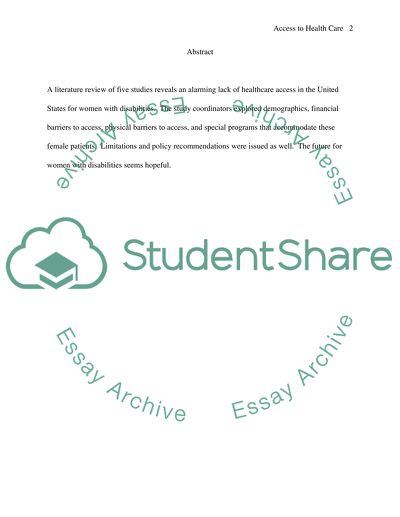Cite this document
(“A Literature Review on How Access to Health Care Affects Women With Essay”, n.d.)
A Literature Review on How Access to Health Care Affects Women With Essay. Retrieved from https://studentshare.org/health-sciences-medicine/1503754-a-literature-review-on-how-access-to-health-care-affects-women-with-disabilities-in-the-us
A Literature Review on How Access to Health Care Affects Women With Essay. Retrieved from https://studentshare.org/health-sciences-medicine/1503754-a-literature-review-on-how-access-to-health-care-affects-women-with-disabilities-in-the-us
(A Literature Review on How Access to Health Care Affects Women With Essay)
A Literature Review on How Access to Health Care Affects Women With Essay. https://studentshare.org/health-sciences-medicine/1503754-a-literature-review-on-how-access-to-health-care-affects-women-with-disabilities-in-the-us.
A Literature Review on How Access to Health Care Affects Women With Essay. https://studentshare.org/health-sciences-medicine/1503754-a-literature-review-on-how-access-to-health-care-affects-women-with-disabilities-in-the-us.
“A Literature Review on How Access to Health Care Affects Women With Essay”, n.d. https://studentshare.org/health-sciences-medicine/1503754-a-literature-review-on-how-access-to-health-care-affects-women-with-disabilities-in-the-us.


